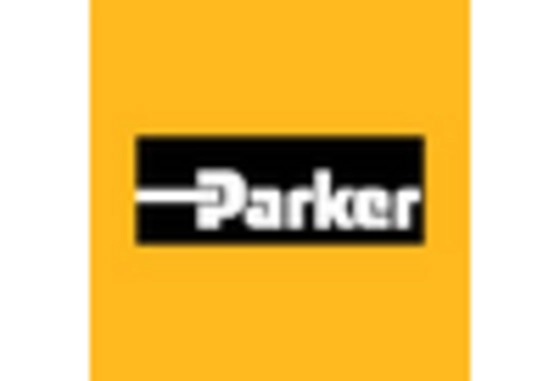Technological Advancements in Materials
The Aircraft Refueling Hose Market is experiencing a notable shift due to advancements in materials technology. Innovations such as lightweight composite materials and enhanced rubber compounds are being integrated into hose designs, improving durability and flexibility. These advancements not only extend the lifespan of refueling hoses but also enhance their resistance to various environmental factors, including extreme temperatures and chemical exposure. As a result, manufacturers are increasingly adopting these new materials to meet the rigorous demands of modern aviation. The market for advanced materials in the Aircraft Refueling Hose Market is projected to grow significantly, driven by the need for more efficient and reliable refueling solutions.
Technological Integration and Automation
The Aircraft Refueling Hose Market is witnessing a trend towards technological integration and automation in refueling processes. The adoption of automated refueling systems and smart technologies enhances operational efficiency and reduces human error. These innovations allow for real-time monitoring of fuel transfer, ensuring accuracy and safety during refueling operations. As airlines and ground handling companies increasingly invest in automation to streamline their operations, the demand for advanced refueling hoses that can support these technologies is likely to rise. This trend indicates a shift towards more sophisticated refueling solutions within the Aircraft Refueling Hose Market, potentially leading to improved performance and safety outcomes.
Regulatory Compliance and Safety Standards
The Aircraft Refueling Hose Market is heavily influenced by stringent regulatory compliance and safety standards imposed by aviation authorities. These regulations mandate the use of high-quality materials and robust designs to ensure safe refueling operations. Compliance with these standards not only mitigates risks associated with fuel spills and fire hazards but also enhances the overall safety of aircraft operations. As a result, manufacturers are compelled to invest in advanced technologies and quality assurance processes to meet these requirements. The increasing focus on safety in the aviation sector is likely to drive growth in the Aircraft Refueling Hose Market, as stakeholders prioritize compliance and risk management.
Rising Air Traffic and Aircraft Fleet Expansion
The Aircraft Refueling Hose Market is poised for growth due to the rising air traffic and the expansion of aircraft fleets worldwide. As more airlines and cargo operators invest in new aircraft to meet increasing passenger and freight demand, the need for efficient refueling solutions becomes paramount. This trend is reflected in the projected increase in global air traffic, which is expected to rise significantly over the next decade. Consequently, the Aircraft Refueling Hose Market is likely to benefit from this expansion, as operators seek reliable and high-performance refueling hoses to support their growing fleets.
Sustainability and Environmental Considerations
The Aircraft Refueling Hose Market is increasingly influenced by sustainability and environmental considerations. As the aviation sector faces pressure to reduce its carbon footprint, there is a growing demand for eco-friendly refueling solutions. Manufacturers are responding by developing hoses that minimize fuel leakage and are made from recyclable materials. This shift towards sustainability not only aligns with global environmental goals but also appeals to airlines looking to enhance their corporate social responsibility profiles. The emphasis on sustainable practices is expected to drive innovation and growth within the Aircraft Refueling Hose Market, as stakeholders seek to balance operational efficiency with environmental stewardship.

















Leave a Comment